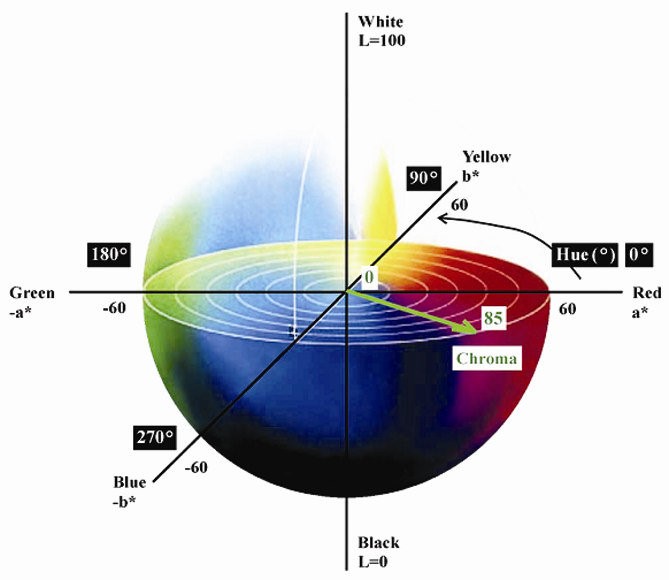In 1975 the CIE (International Commission on Illumination) proposed a new system to standardize and simplify communication about hues, regardless of measuring instrument and lighting conditions. The CIELAB system works to this day as a point of reference in seller-customer relations. It is a color space that best simulates the human perception of color differences. Each color acquires 3 color coordinates. In the CIELAB system these coordinates are L*, a* and b* and are depicted in a three-dimensional coordinate system.
The L* (lightness) coordinate corresponds to the brightness value and takes values from 0 (black) to 100 (white), while the a* and b* coordinates correspond to the color information, without their values having numerical limits. The value of a* gives the position of the color between green and red (smaller value of a* tends to green, larger tends to red). Accordingly, the value of b* gives the position between blue and yellow (smaller b* value tends towards blue, larger towards yellow).
The combination of the three coordinates always describes the same color regardless of the lighting and observation conditions (due to the measuring instruments – device independent). In the paint industry, the CIELAB system is used in the quality control of shades, the research of new recipes, the creation of a database of color systems and comparison with the competition.
Learn more about Colorimetry following IoCT courses.

